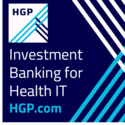(Cough, the same kind of dingbat who doesn't think autistic people play BASEBALL. Of all the examples to choose...)
Time Capsule: Vendors Seek to Diversify As the Hospital Systems Market Matures
I wrote weekly editorials for a boutique industry newsletter for several years, anxious for both audience and income. I learned a lot about coming up with ideas for the weekly grind, trying to be simultaneously opinionated and entertaining in a few hundred words, and not sleeping much because I was working all the time. They’re fun to read as a look back at what was important then (and often still important now).
I wrote this piece in June 2006.
Vendors Seek to Diversify As the Hospital Systems Market Matures
By Mr. HIStalk

Vendors of traditional hospital information systems are hedging their bets for future success, judging from recent announcements. McKesson said this week it is acquiring RelayHealth to move into consumer health care systems. A group of vendors said they would develop standards to make their home health devices interoperable. And Cerner’s announced growth areas are mostly outside of traditional hospital IT.
The message seems clear – business prospects are better elsewhere. Wall Street likes growth that big conglomerates and publicly-traded vendors can’t get from hospital-only sales, given a finite supply of prospects that are big enough to afford their wares. The recent spike in clinical systems deals may have been transitory, locking up all the laggard customers but leaving fewer for the years to come.
Perhaps we’re in the classic mature market, where the customer base is saturated, vendors are consolidating, product prices go down to reflect decreased demand, and emphasis moves from R&D to solid, user-friendly applications that are differentiated primarily on specific features (think Rubbermaid). Vendors can still make a lot of money, only instead of from product sales, profits come from selling high-margin services and maintenance to existing customers.
Under this scenario, and given high switching costs, hospitals may no longer command the undivided attention of vendors whose gaze is wandering to sexy new markets. Maybe there won’t be any successful hospital-only vendors left, except possibly for Meditech, which is ideally suited for success due to its dominant market penetration, near-universal customer retention, low cost through economies of scale, and private ownership.
Even if the hospital systems market is mature, just about every other health care IT sector isn’t. Business will sizzle in ambulatory systems, various forms of telemedicine, data analysis, payer intelligence, genomics, interoperability, consumer health, drug research, home health, and medical device connectivity. Products in the innovation and growth stages of the product life cycle require high development and sales costs. The aggregate market must be defined and created. Most companies will lose money, but winners will emerge from the turmoil to gain competitive advantage and profitability.
It will be interesting to see how the traditional players fare in these markets, where they’ll need seldom-used capabilities such as technical innovation, nimble execution, and delivery of their message to a much larger number of prospects who behave less cohesively and identifiably than hospitals. Having a good idea isn’t enough. If I were an investor, I’d buy strictly on the quality of company management, choosing vendors with visionary, focused leaders who can rise above a host of new market entrants that are likely to fail due to stumbles in execution.
The original HIT marketplace was first changed dramatically by the emergence of large, full-line hospital systems vendors that moved the industry away from small, innovative best-of-breed vendors and customer self-development. The second change was the absorption of most vendors into unfocused conglomerates or larger competitors. The third wave — obviously underway — is diversification of vendors into non-hospital health care IT.
It remains to be seen whether hospitals will be better or worse off with these changes. We struggled even when we had the undivided attention of our vendors, failing to manage change and gain ROI in an admittedly screwy and ever-changing health care non-system. We may not enjoy giving up the limelight. After many years as a hospital IT person, I’m a little jealous to see the excitement growing in those areas of health care I don’t yet know much about.




















































































This post reminded me of something I read last week, originally from TechCrunch, “Healthcare Providers Will Use Tech to Differentiate and Produce Better Outcomes.” http://bit.ly/opcGtB In looking at how the market has matured, there still doesn’t seem to be enough diversity in choices, and pricing is still out of reach for so many. While most rave about systems like Epic, even these vendors seem to continue to struggle with issues like interoperability (see Geisinger’s experience http://www.businessweek.com/magazine/content/09_18/b4129030606214_page_4.htm ).
The comparison in the post from TechCrunch to the early CRM days really seemed like a fitting one for today: “Stanford Hospital & Clinics is implementing a traditional health IT system from one of the leading Health IT vendors — Epic Systems. Epic is appropriately named as, by all accounts, the implementations and cost are also epic. All the Epic projects I’ve heard about are eight and nine figures for the cost of the software and implementation. The scale of projects sound similar to the early days of CRM where it could only be implemented by very large organizations. The market leader for CRM was Siebel and those projects regularly ran seven to nine figures (reportedly 10 figures in the case of Epic’s Kaiser implementation) which is obviously out of reach for small and medium sized organizations.”
Epic does seem to be the Siebel of today. And while that might be a perfect fit for some facilities, I am wondering how much we can expect new technology innovations to help drive down the cost of the ‘Siebels’ in health care? Also in the TechCrunch post is this interesting point: “I would predict that as the closed nature of legacy client-server CRM systems created an opportunity for Salesforce, the legacy client-server Health IT vendor systems are similarly closed and will create opportunities for modern, open architectures from a new generation of tech startups.”
Many of these smaller startups in health IT seem to focus more on the interoperability tools themselves (vs an all-inclusive enterprise system), which seems to be going in the right direction to help change the market. But systems like Epic, which are still largely proprietary, appear to remain the more influential drivers of the market right now. Will we see more of the “Salesforce.com” models pick up, and will they help influence choice and pricing? Or, with government incentives so available, do we expect to see mostly more “Siebels”? I’m also interested to know what services and additional technology capabilities the larger vendors might venture into if the market does move more quickly toward open architecture. The large CRM systems in their day had the most value when that market matured to a point where their customers had the flexibility to integrate other applications and programs. Looking back at CRM, I think EHR systems could benefit in much the same way.